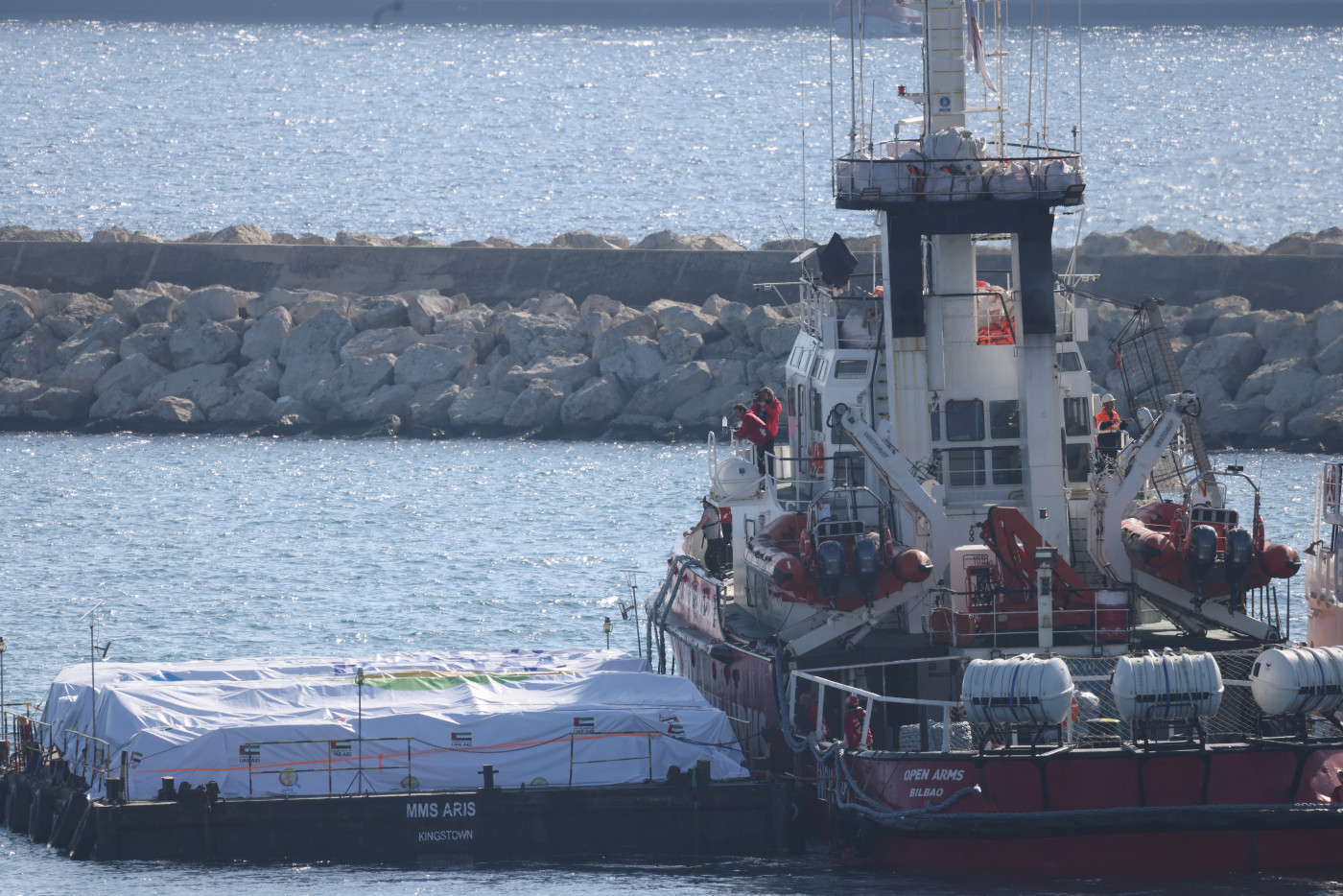China's Invasion Force Could Face Hundreds of Exploding Sea Drones
Chinese amphibious forces who must cross the Taiwan Strait in a future invasion scenario are likely to face hundreds of naval drones, each packed with deadly explosives, according to plans reportedly underway in Taipei.
The application of uncrewed surface vessels, or USVs, in the ongoing Russia-Ukraine war has peaked the interest of Taiwan's navy but especially its army, which could place an order of more than 200 units, Taiwan's Liberty Times newspaper said on March 9.
The National Chung-Shan Institute of Science and Technology (NCSIST), Taiwan's state-owned arms developer, was awarded the contract for prototype sea drones, which are expected to be evaluated over the next two years, the paper added.
USVs and other remote-controlled or autonomous systems are expected to dominate modern warfare in the years to come, a subject matter expert told Newsweek. In Taiwan's case, they also fit the bill of so-called asymmetric weaponry—inexpensive, mobile and highly survivable capabilities that U.S. defense planners say the island's government should prioritize.
In Europe, Ukraine's troops have used remotely piloted vessels for repeated attacks on Russia's Black Sea Fleet, scoring high-profile hits otherwise not expected of a nation without a conventional navy. The robotic ships—often equipped with cameras and other sensors—are also used for surveillance, patrols and intelligence gathering, effectively reducing Kyiv's manpower attrition.
Taiwan's concrete interest in replicating Ukraine's successes first surfaced last fall amid whispers of a $25.8 million sea-drone program, devised to counter the Chinese military's Soviet-designed Zubr class of air-cushioned landing craft and its growing fleet of roll-on, roll-off cargo ships.
The initiative was among several meaningful insights the island had gleaned from the conflict since its early weeks.
Taipei is seeking two models of USV prototypes, each differing in size and explosive payload, according to the Liberty Times. The unmanned attack boats—with a remote range of more than 40 miles and a reduced radar signature to avoid detection—could enter mass production in 2026 following formal assessments.
NCSIST declined to comment on the classified plans and referred Newsweek to the Taiwanese Defense Ministry.
A Taiwan defense spokesperson told Newsweek that NCSIST's weapons systems are developed "in accordance with the strategic guidance of the Defense Ministry and the operational needs of the military branches."
The spokesperson declined to comment on the sea drone program, described as "a sensitive national defense matter."
The Chinese Defense Ministry could not be reached for comment.
China claims Taiwan as its own despite Taipei's repeated rejection of the sovereignty assertion. Beijing has not ruled out the use of force against the island. To effectively control it, however, an occupying force would need to cross the 110-mile Taiwan Strait—by air or sea.
USVs are "very suitable" for the defense of Taiwan, said Su Tzu-yun, a senior analyst at the Institute for National Defense and Security Research, Taipei's Defense Ministry-affiliated think tank.
"Unmanned autonomous systems will be the future stars of the show," Su told Newsweek. Before the 2020 elections in the U.S., current Biden administration officials had already proposed plans to develop such systems in order to erode the numerical advantage of China's traditional platforms, he said.
"Taiwan's strategy is one of defensive warfare, so low-cost, short-range USVs can be paired with land-based anti-ship missiles and mines to form Taiwan's A2/AD, making it more difficult to land on Taiwan," Su said, referring to the "anti-access/area denial" strategy that prevents an adversary from freely operating within a specific geographic area.
The Chinese military is modernizing its forces to successfully deploy A2/AD measures—chiefly missile systems—against American and allied forces who might wish to intervene on Taiwan's behalf inside the first island chain.
Sea drones can complicate the People's Liberation Army's attempts to land or blockade Taiwan, according to Su. In the hands of Taiwan's army, they can be used for anti-landing warfare, while its navy can deploy them from warships for surprise attacks.
In modern warfare, Ukraine has perhaps provided the best examples of USV development and application. Last week, its security service released images of its latest "Sea Baby" naval drone, which can cover over 600 miles of water at a top speed of 56 miles per hour.
The Sea Baby costs around $221,000, but they can sink or damage Russian warships worth hundreds of millions of dollars more, Kyiv's officials told The Associated Press during the unveiling.
Disclaimer: The copyright of this article belongs to the original author. Reposting this article is solely for the purpose of information dissemination and does not constitute any investment advice. If there is any infringement, please contact us immediately. We will make corrections or deletions as necessary. Thank you.

